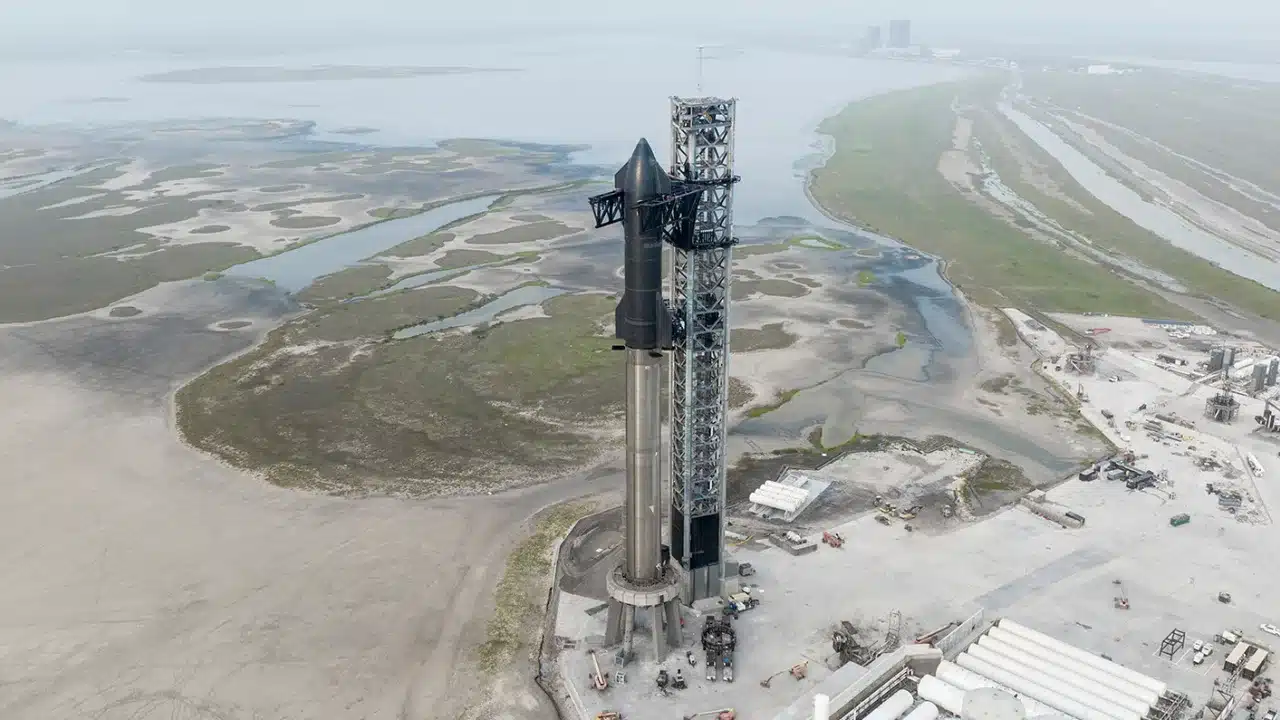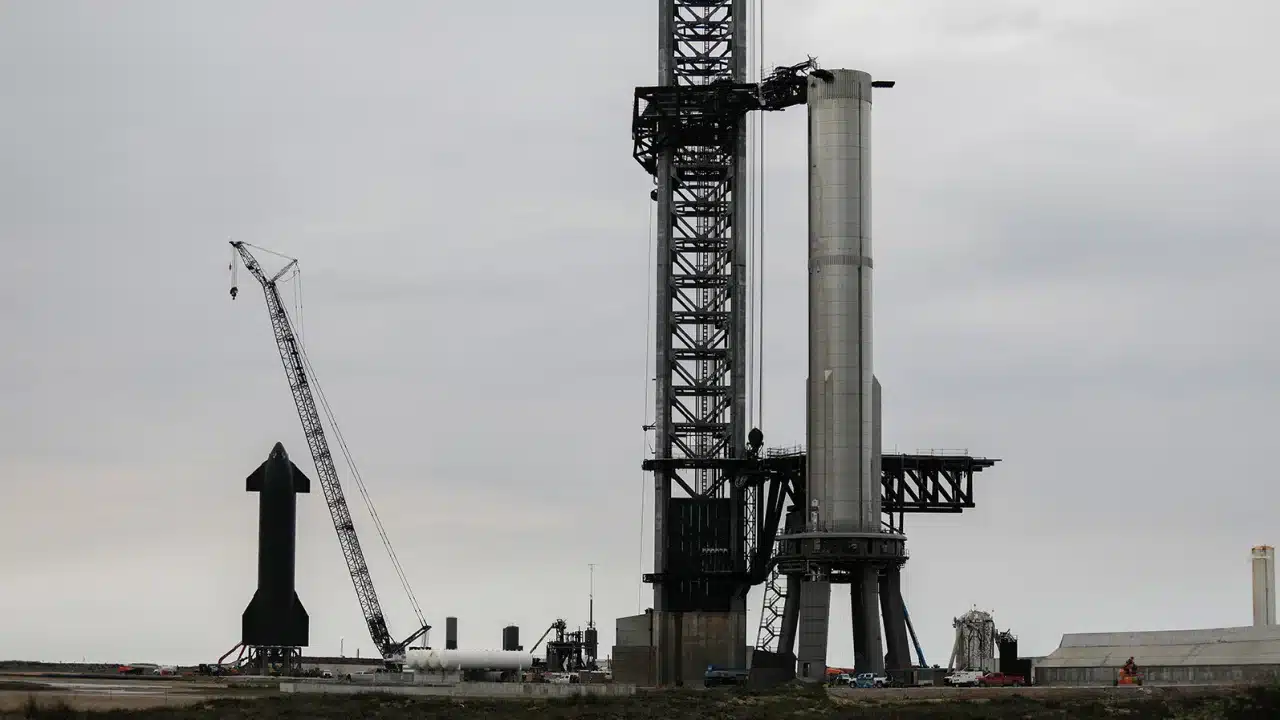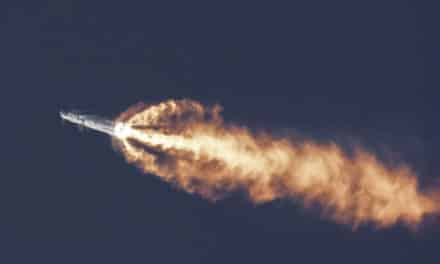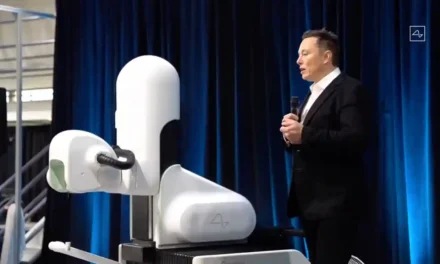SpaceX has cleared the last regulatory hurdle ahead of the inaugural launch of its powerful Starship rocket. The Federal Aviation Administration (FAA) granted the company’s request to perform an uncrewed test flight of the rocket from SpaceX’s facilities in South Texas. The vehicle, which has already undergone ground tests before the flight, is ready for launch as early as Monday.
The FAA stated in a press release that after a thorough licensing evaluation process, they determined that SpaceX met all safety, environmental, policy, payload, airspace integration, and financial responsibility requirements.
An air traffic restriction was issued by the FAA for the area surrounding the launch site early on Friday. The Notice to Airmen (NOTAM) orders aircraft and other air traffic to stay clear of the launch area east of Brownsville, Texas, on Monday between 7:00 and 10:05 CT (8:00 to 11:05 ET).

This will be SpaceX’s first attempt to put the Starship into orbit after a multi-year testing campaign to refine the rocket’s design. SpaceX CEO Elon Musk has talked about Starship for a decade, presenting its design and describing it as the vehicle that supports the company’s foundational purpose: to send humans to Mars for the first time.
NASA has already awarded SpaceX contracts and options worth over $3 billion to use Starship for transporting government astronauts to the Moon’s surface under the agency’s Artemis program.
The inaugural test flight will not complete an orbit around Earth. However, if successful, it will reach orbital speeds and travel about 240 kilometers above Earth’s surface, well beyond the altitude where outer space begins.
Your content goes here. Edit or remove this text inli
Starship consists of two parts: the Super Heavy rocket, which houses 33 engines, and the Starship spacecraft, which sits atop the rocket during launch and is designed to detach once the rocket depletes its fuel to complete the mission. The booster rocket will be discarded into the ocean shortly after takeoff in this flight. In future flights, SpaceX plans to recover the vehicle by guiding it to a vertical landing at the launch site. The Starship spacecraft will make nearly a full orbit around the planet and conclude its flight with a splashdown in Hawaii.
Starship development has taken place at SpaceX’s private spaceport about 40 minutes from Brownsville, Texas, on the US-Mexico border. Testing began years ago with short “test hops” of early spacecraft prototypes. The company started with brief flights that lifted a few dozen meters off the ground before evolving to high-altitude flights, many of which ended in dramatic explosions when the company attempted to land them vertically.

However, a suborbital test flight in May 2021 was successful.
Since then, SpaceX has also worked to prepare its Super Heavy rocket for flight. The massive 69-meter tall cylinder houses 33 of the company’s Raptor engines.
When fully stacked, the Starship and Super Heavy stand at about 120 meters tall.
SpaceX has been waiting for over a year for FAA approval for an orbital launch attempt.
The company and federal regulators responsible for certifying that SpaceX’s launches pose no risks to people or property in the area surrounding the launch site have faced significant opposition from the local community, including environmental groups.
In June, the FAA granted SpaceX key approval for the Starship launch, but outlined a list of “mitigation measures” the company would have to adopt before the first launch.
During a call with reporters this week, an FAA official, who declined to be quoted for publication, said the agency has overseen SpaceX’s compliance with the mitigation measures, some of which are still in progress, even as the launch license is issued.
The FAA official stated that government personnel will be on the ground to ensure SpaceX complies with its license during the test launch.
The success of Starship’s inaugural flight would mark a significant milestone for SpaceX and the future of space exploration. With its ambitious goals of sending humans to Mars and working with NASA on the Artemis program, the company aims to push the boundaries of what is possible in space travel.
If Starship proves to be a reliable and efficient vehicle for space missions, it could revolutionize the way we explore our solar system and beyond. As the world watches the launch, many will be eager to see the outcome of this historic event.
Source: CNN




